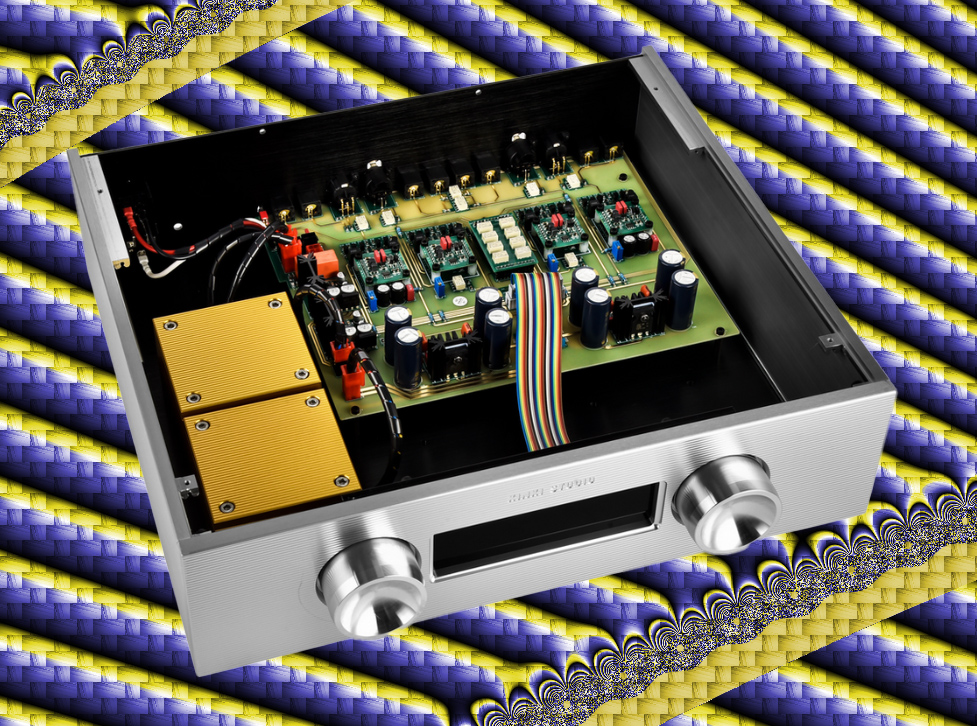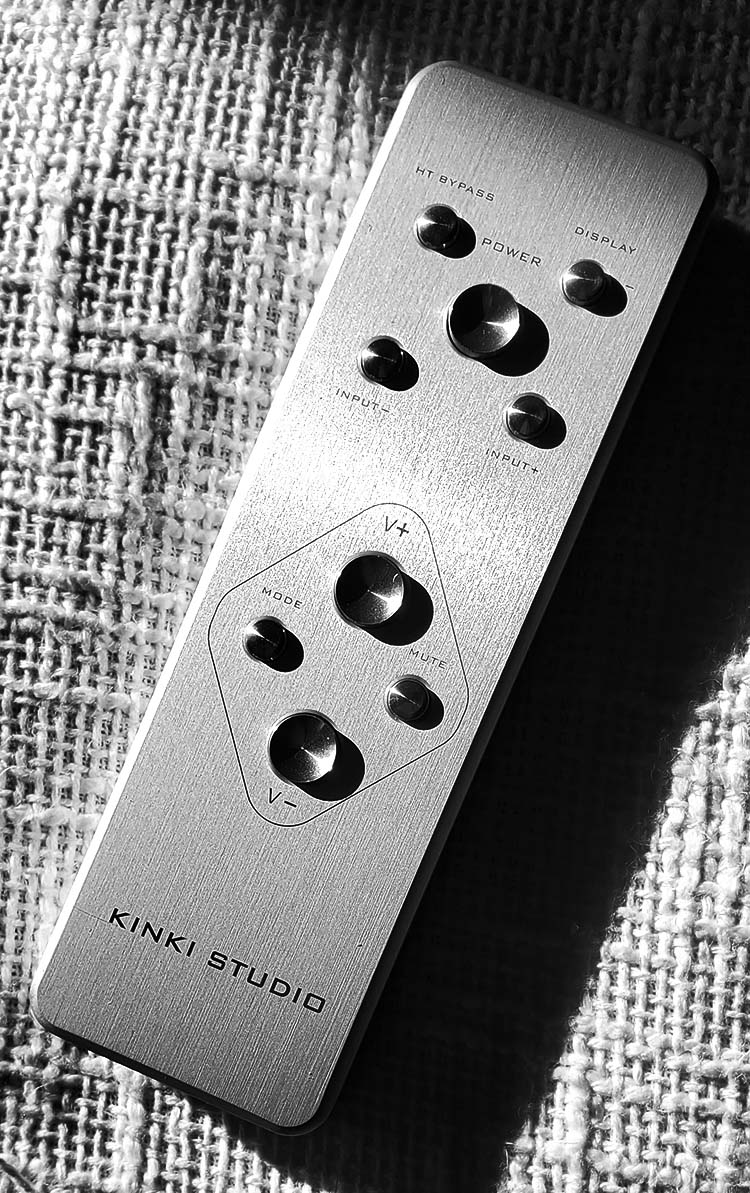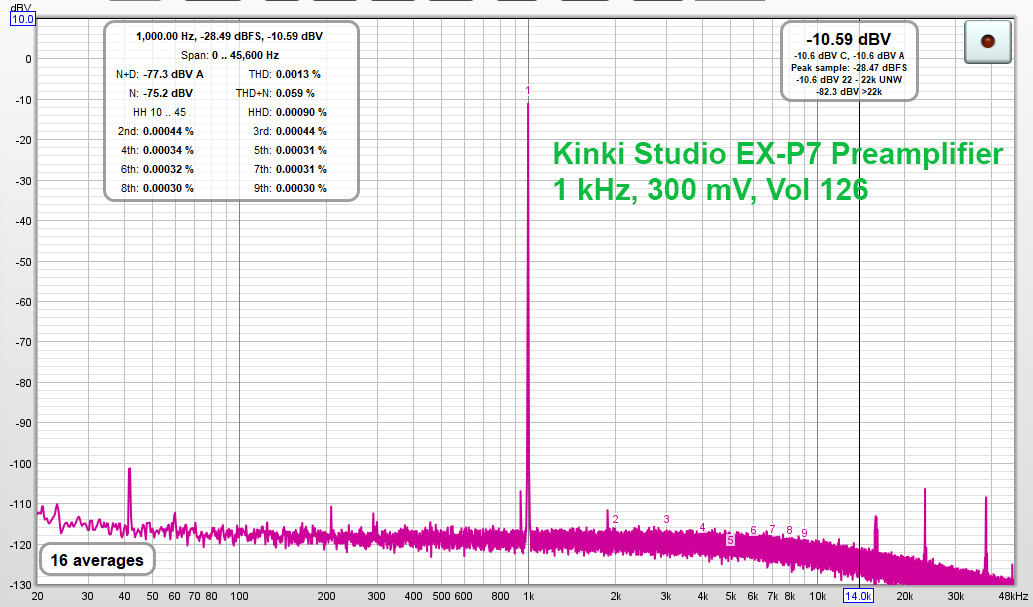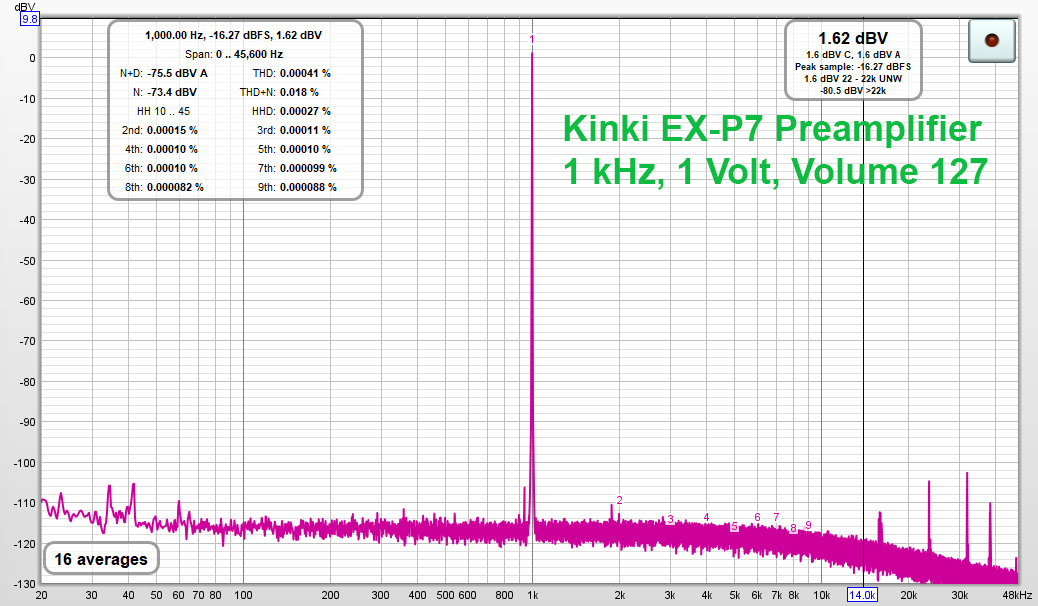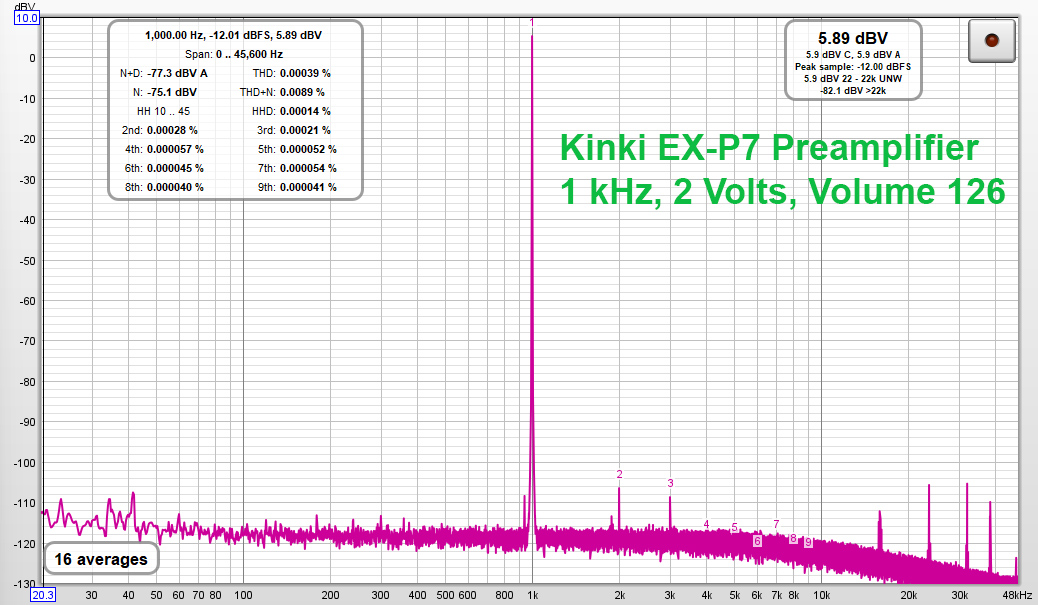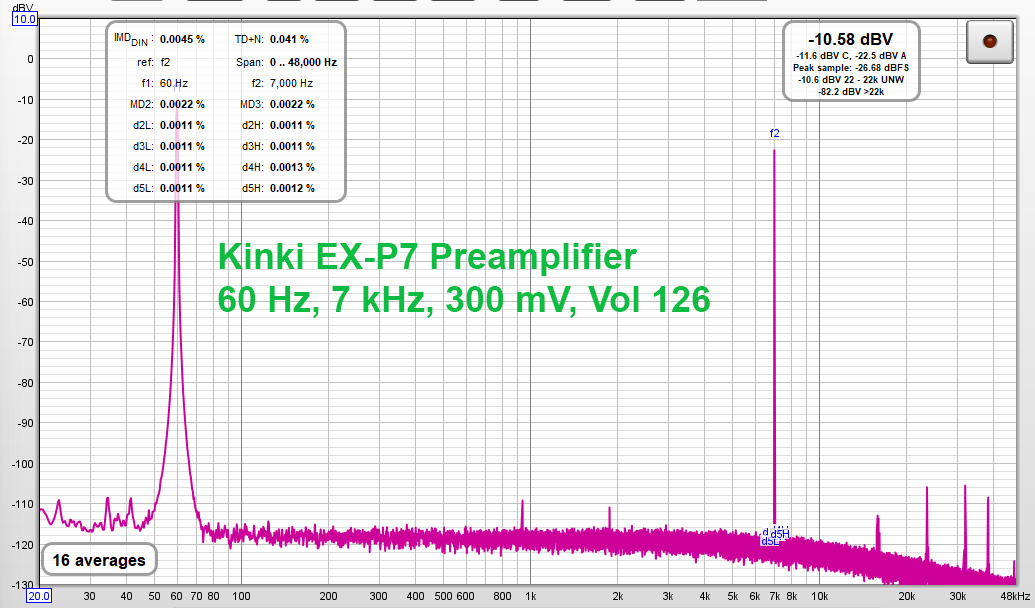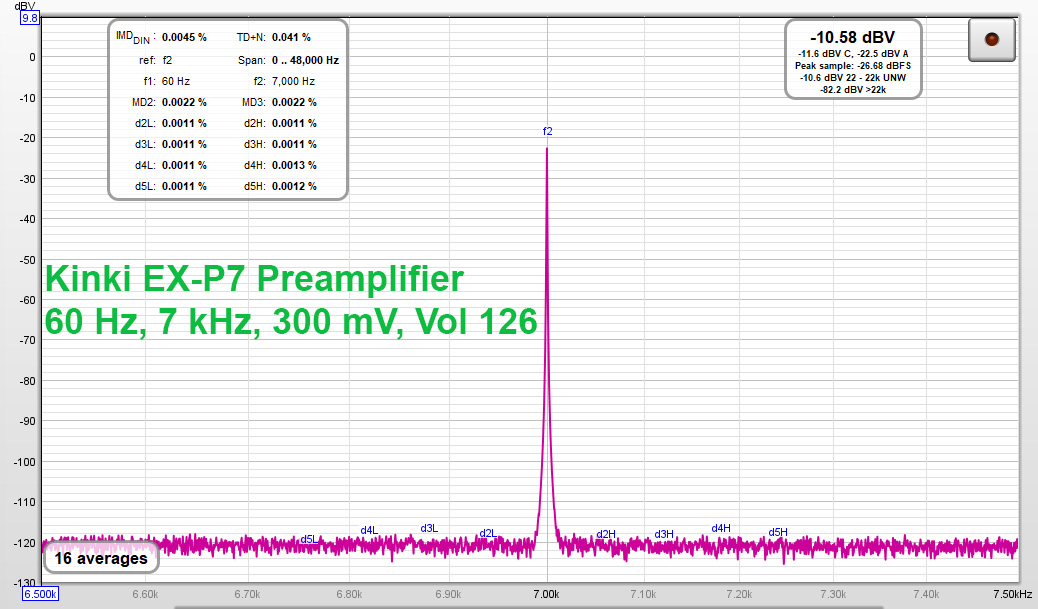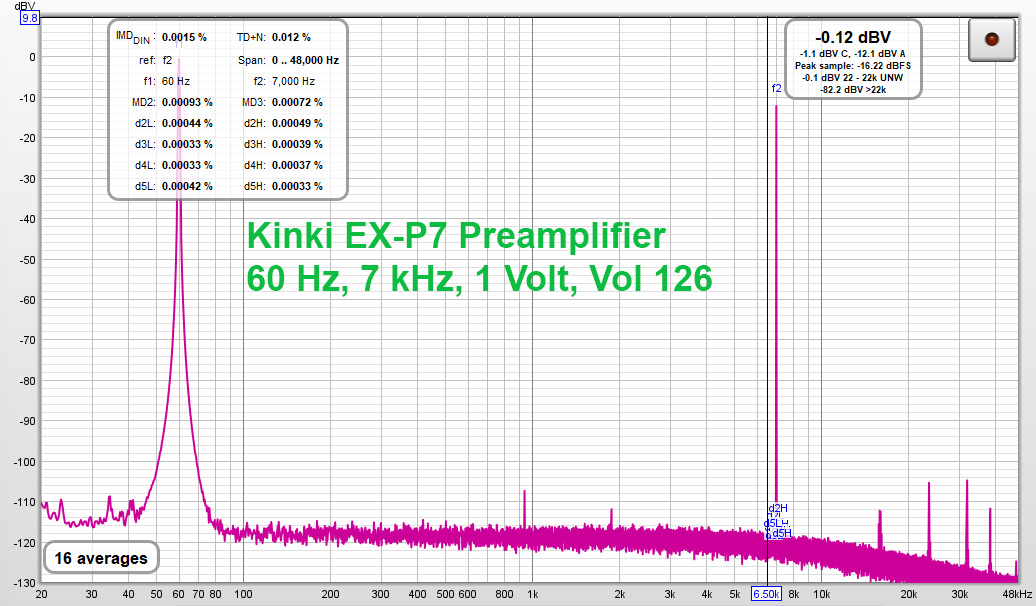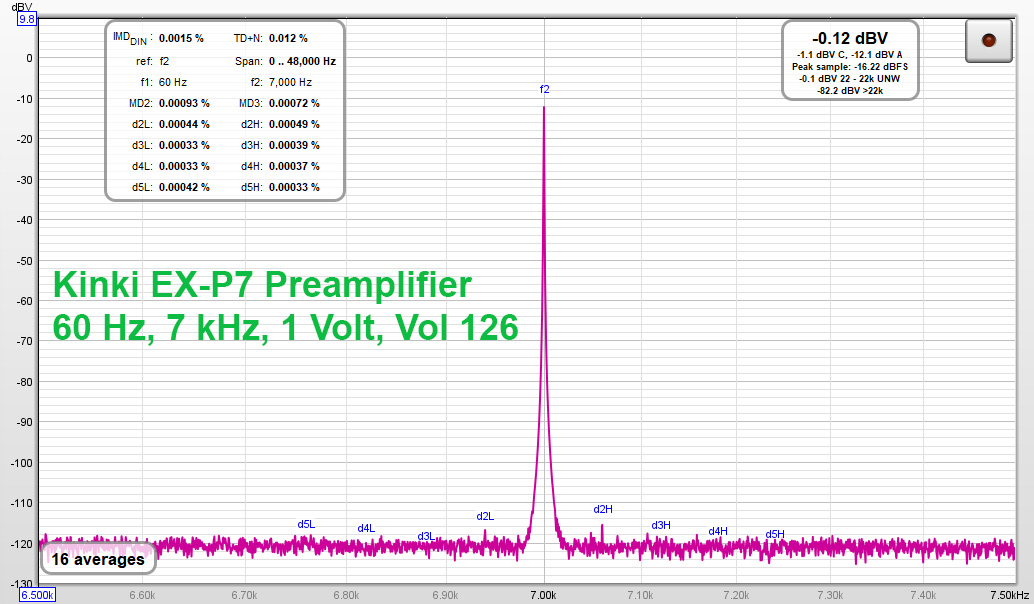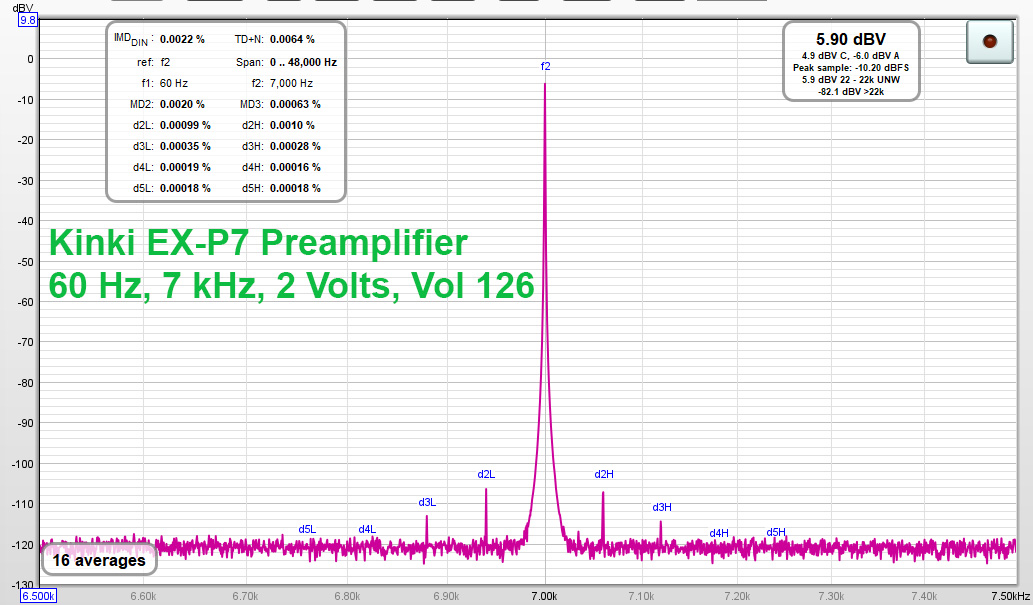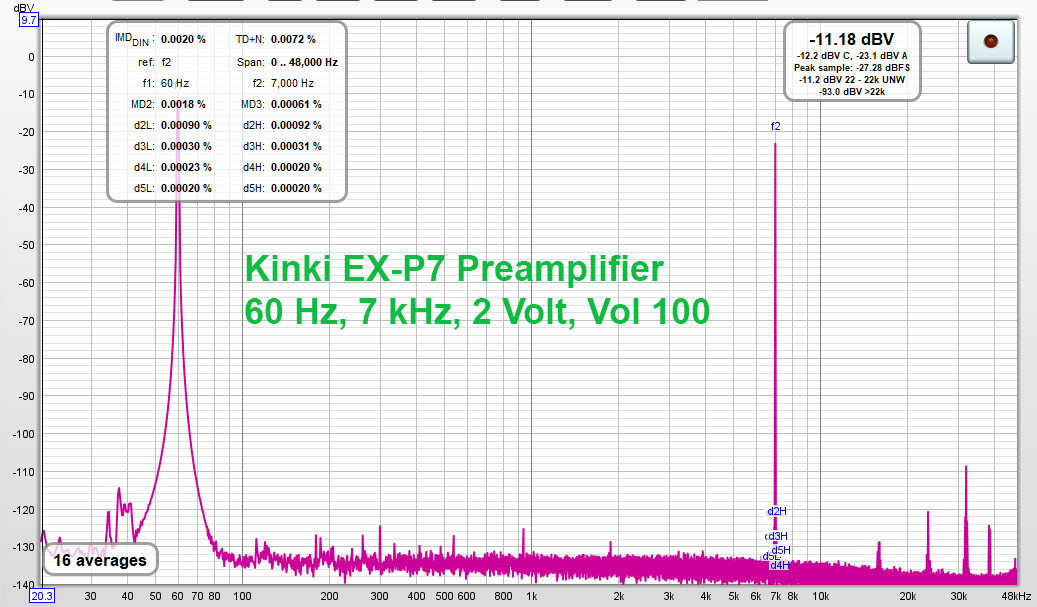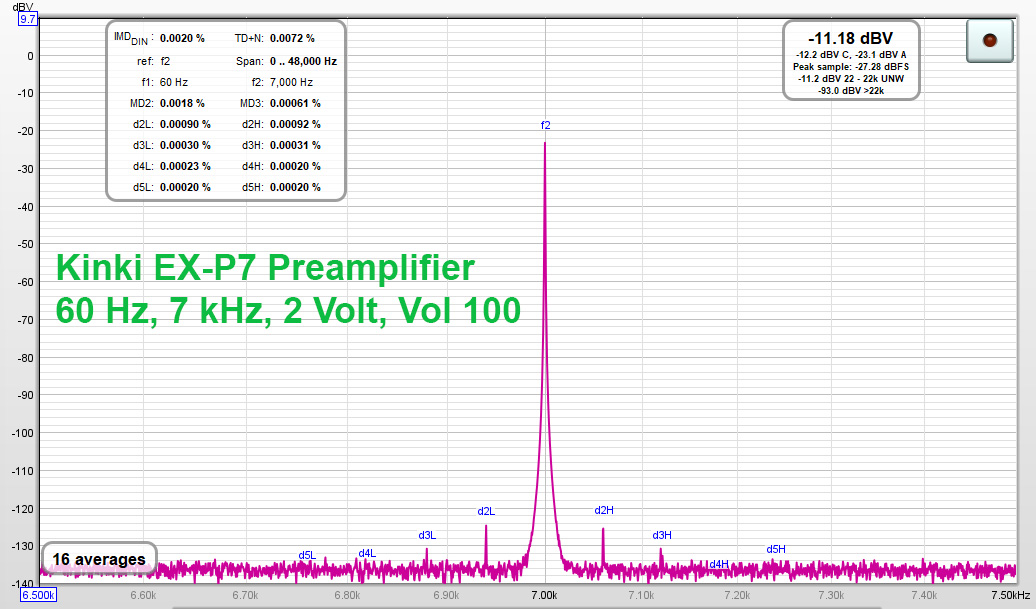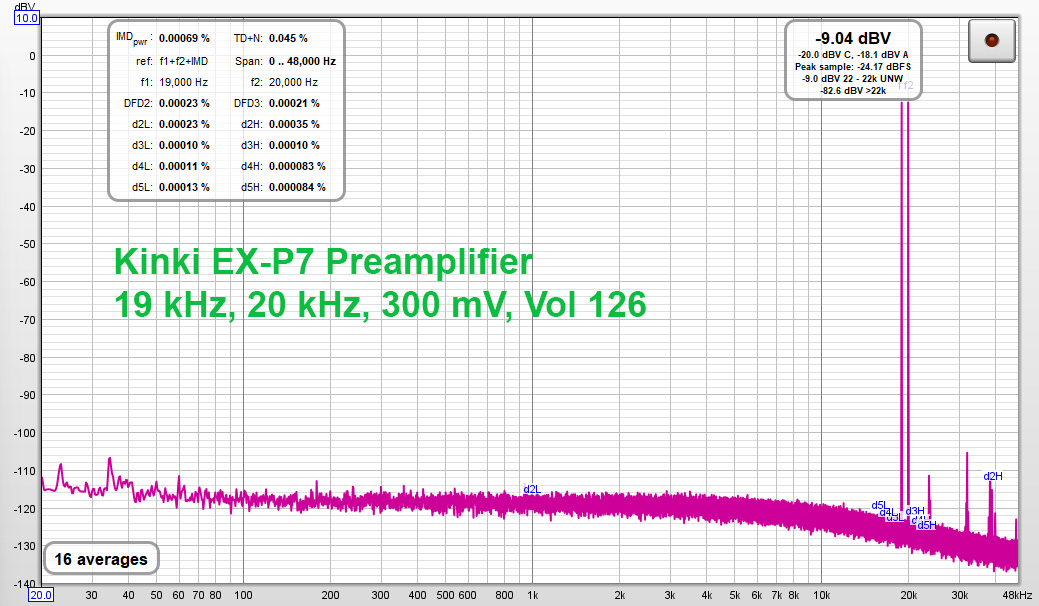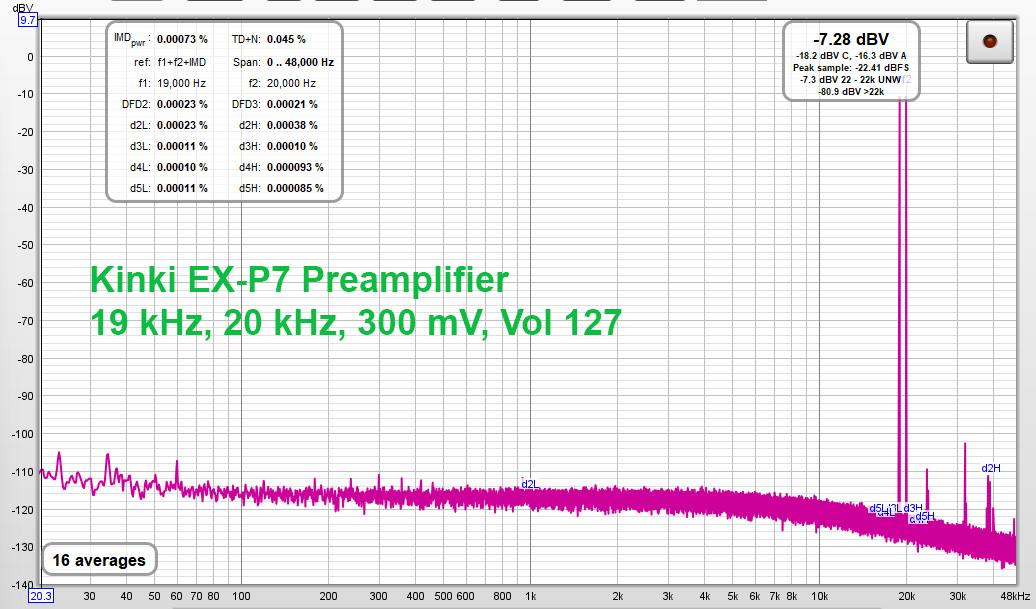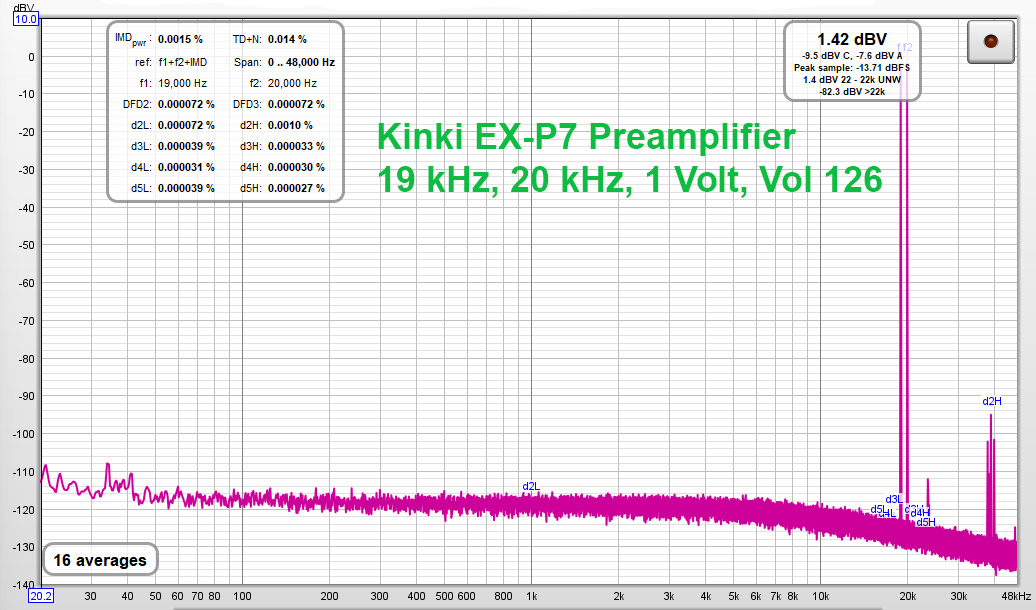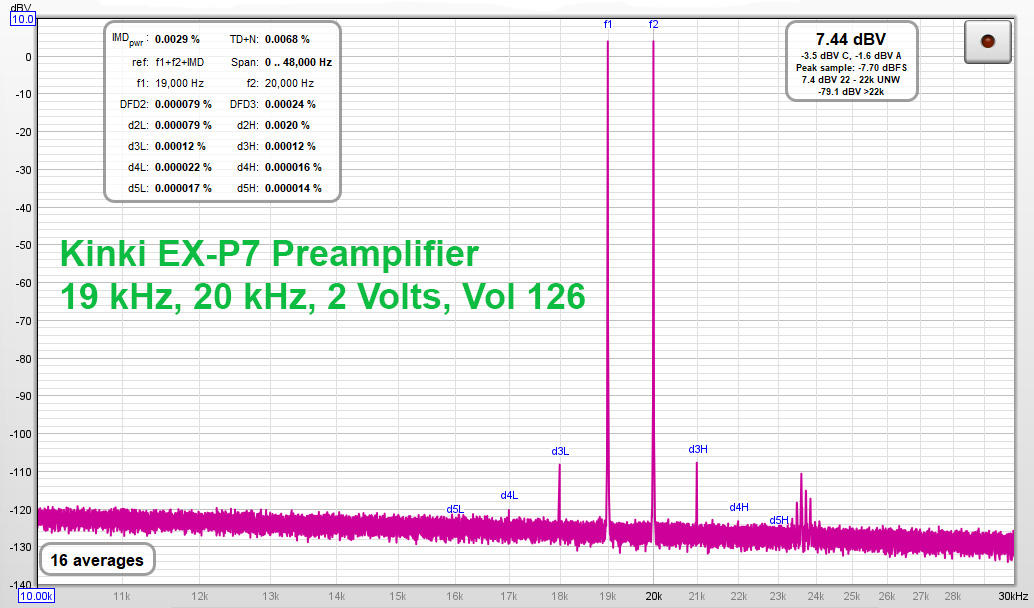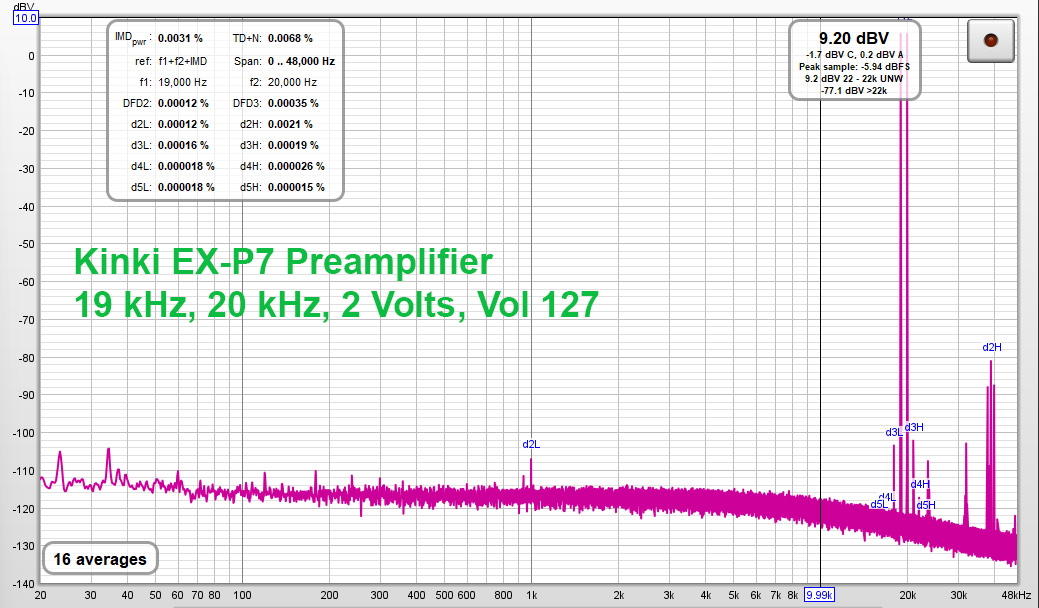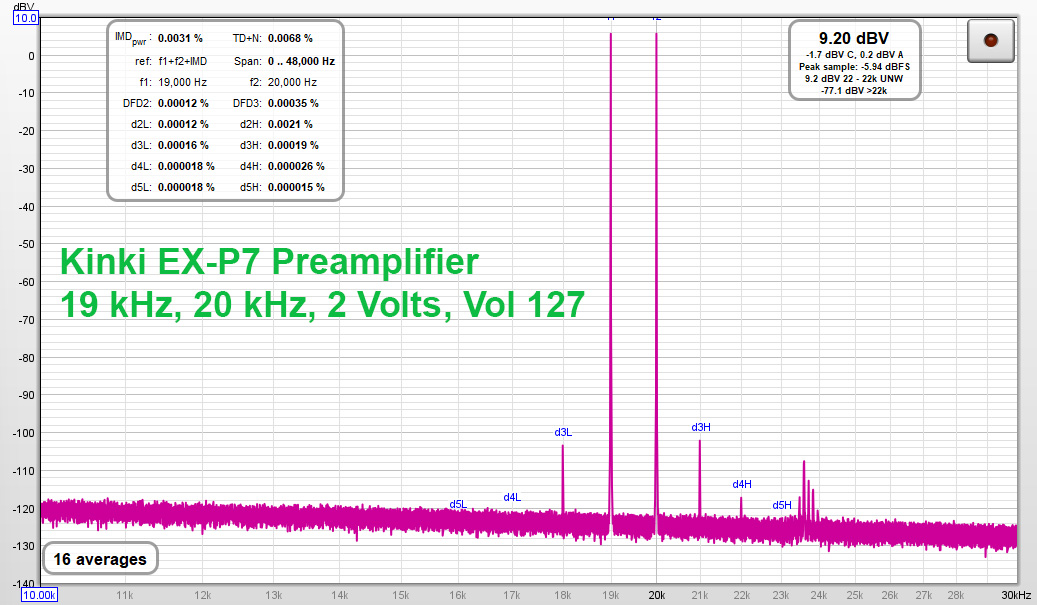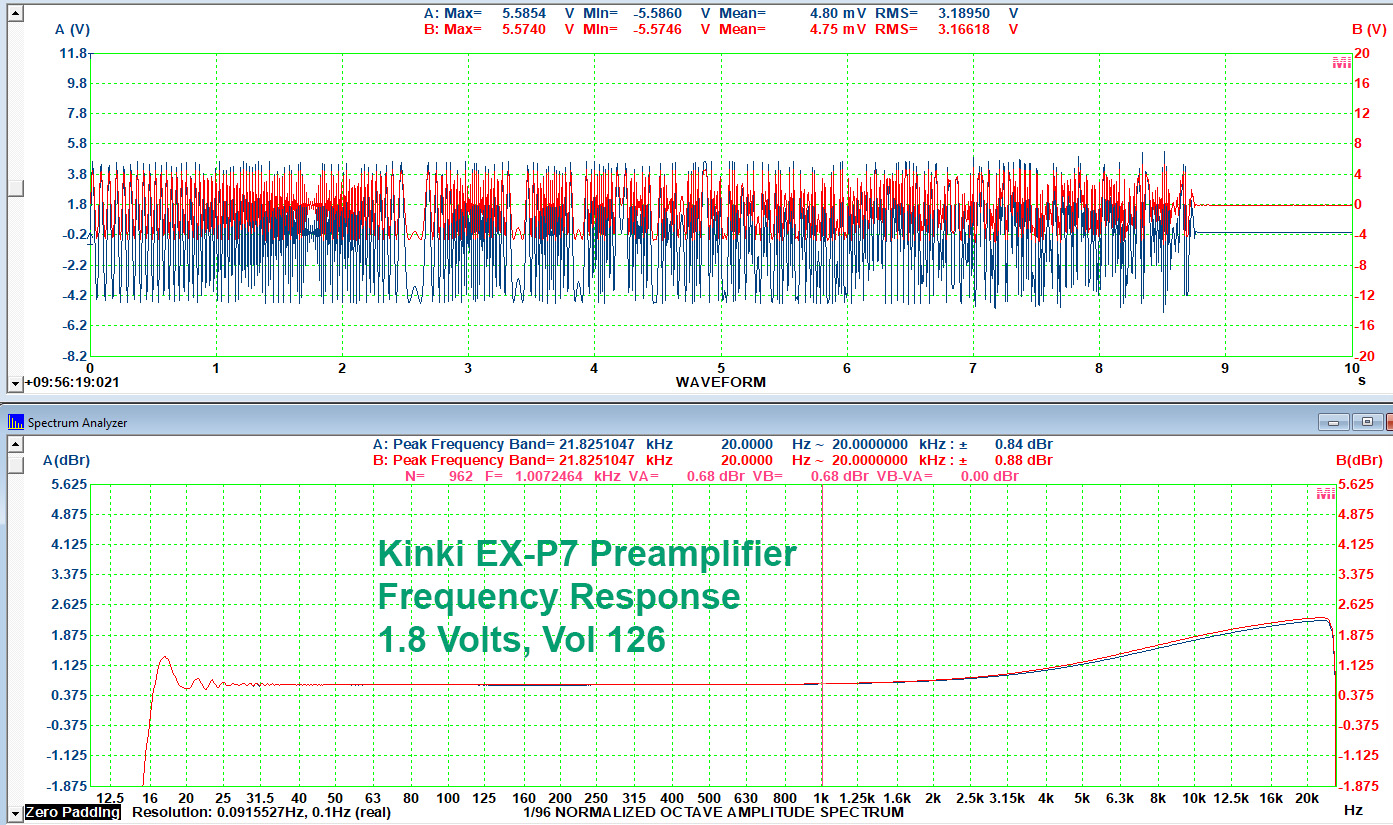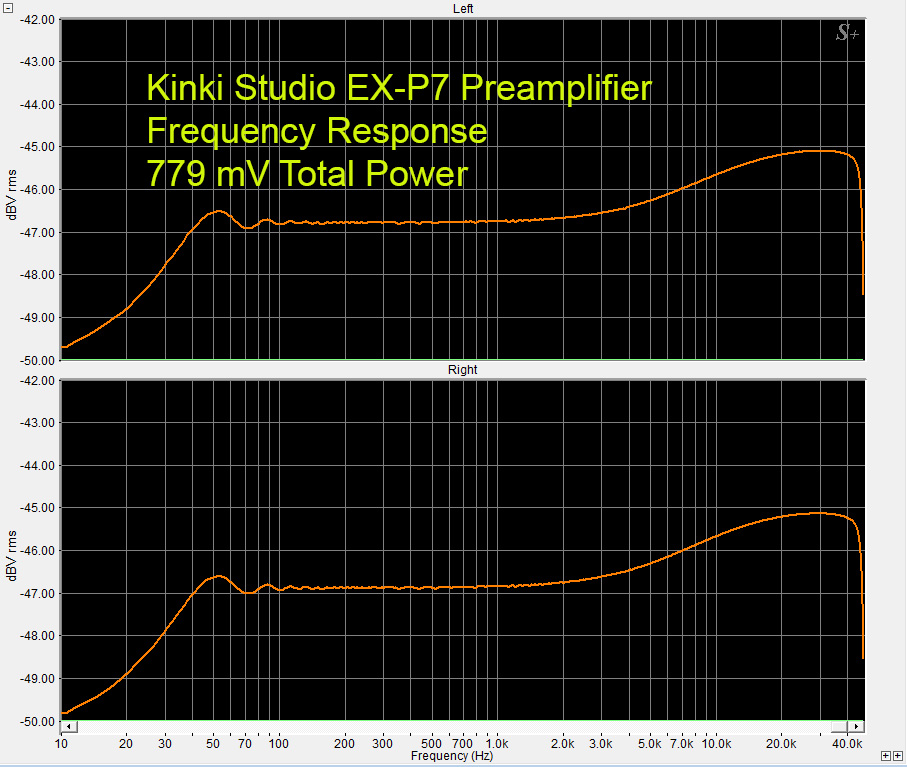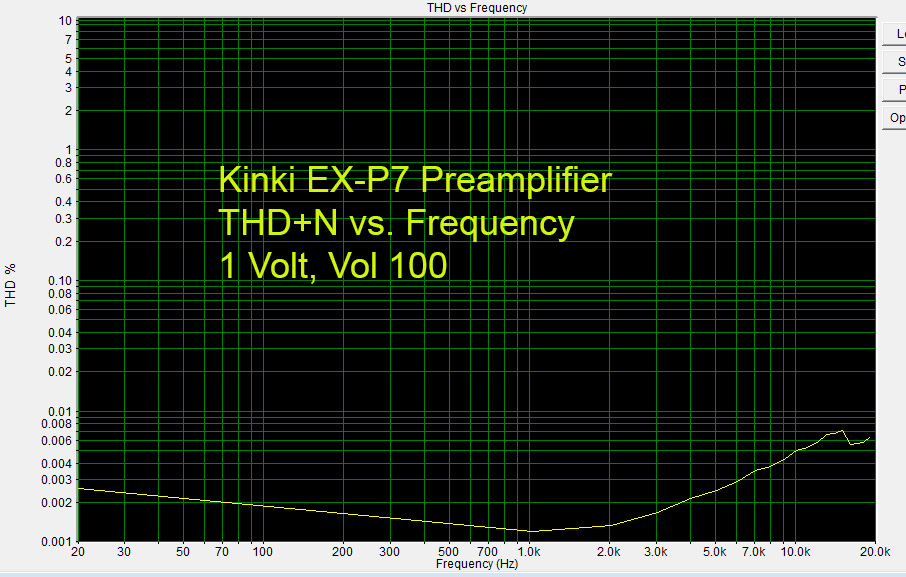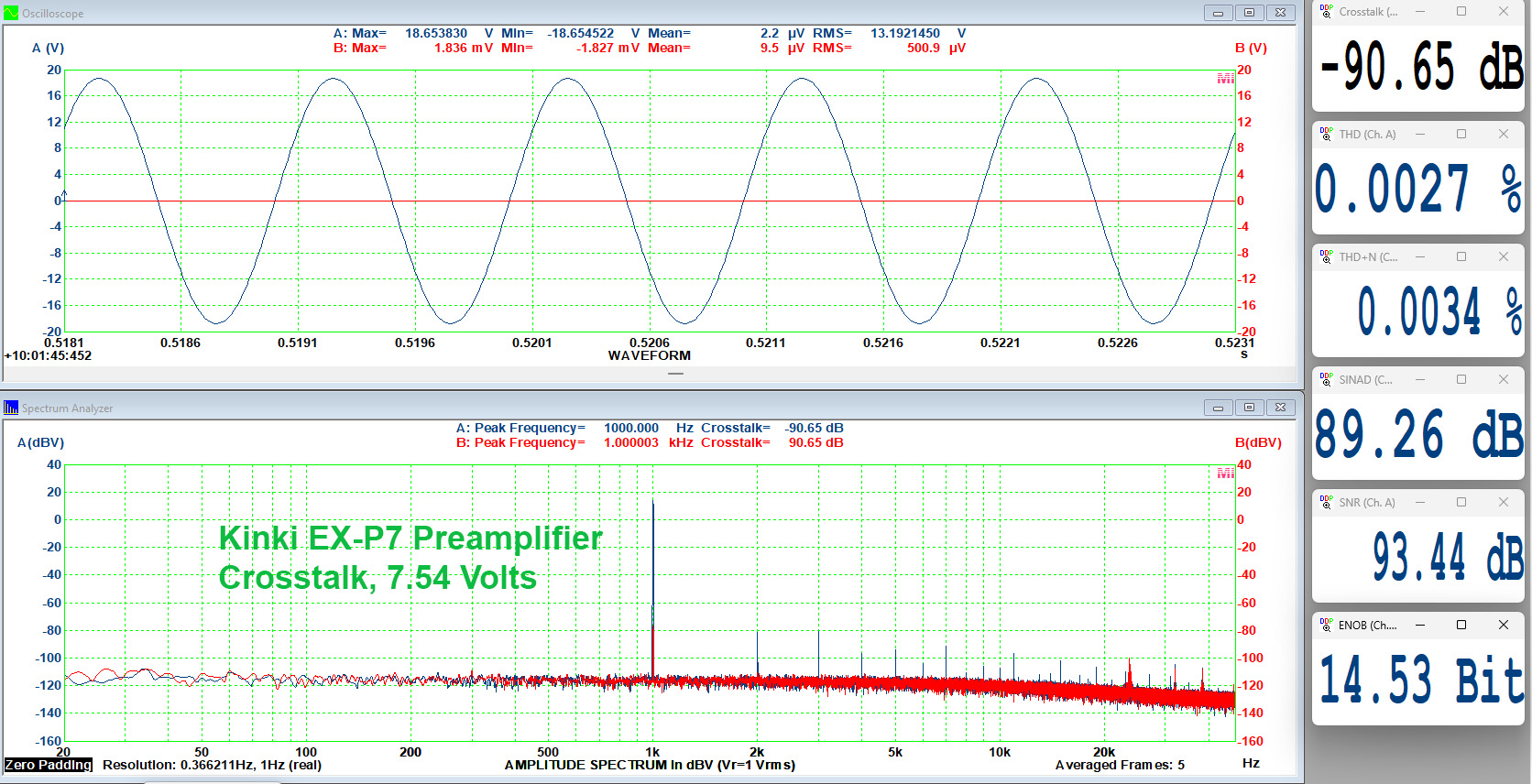Kinki Studio EX-P7 Preamplifier Highlights
- Very low distortion
- XLR and RCA inputs and outputs
- Rising frequency response above 1 kHz which compensates for age-related hearing loss
- Independent power supplies for each channel
Besides manufacturing hi-fi equipment for other countries, China also builds products that it markets directly from their country.
Kinki Studio is just such a company.
Their EX-P7 Preamplifier is one of their products, and I decided to get one for review. Tech Audio Specialties supplied the review unit.
FREQUENCY RESPONSE:
20 Hz – 20 kHz
SNR:
90 dB
THD+N:
0.003%
CHANNEL SEPARATION:
90 dB
DIMENSIONS:
17” – 430mm W x 5” – 125mm H x 14.7” – 370mm D
WEIGHT:
50.7 Pounds – 23 kg
MSRP:
$2,098 USD
Website:
SECRETS Tags:
kinki pre-amplifier, kinki pre-amplifier reviews, reviews 2022, pre-amplifier reviews, pre-amplifier reviews 2022, amplifiers, amplifier reviews, amplifier reviews 2022
The EX-P7 is a solid-state preamplifier with two gain stages. Each channel has its own power supply.
There are XLR and RCA inputs and outputs, but the XLR connectors are a convenience. They are not truly balanced. Click on the graphic to see a full-size view.
The printed circuit board (PCB) is plated with 2 µm of gold.
The volume control is a resistor ladder controlled by a relay attenuator.
As with other preamplifiers, the EX-P7 is pure Class A biased.
The front panel has an input selector on the left and a volume control on the right. The readout is an LCD panel.
A remote control is included, and it is very simple to use.
I listened to the Kinki Studio EX-P7 Preamplifier using a VPI HRX turntable, Sumiko Starling phono cartridge, Pass Labs XP-27 Phono Preamplifier Otari MX-5050B-III-2 Reel-to-Reel Tape Deck, Sennheiser HD 660 Headphones, AURALiC ALTAIR G1 Digital Audio Streamer, OPPO BDP-105 Disc Player, Bryston 4B3 Stereo Power Amplifier, and Sonus faber Lilium Speakers. Cables were various.
Secrets Sponsor
Using several recordings, it was obvious that the EX-P7 has very low distortion. This was confirmed when I did the bench tests. The issue is that it is important to have low-distortion sources, low-distortion power amplifiers, and low-distortion speakers. That was the case for the other equipment I used for the listening test. For some of the music, I streamed Qobuz from a laptop to the AURALIC DAC in the streamer. Below is a sample of the albums I listened to.
The volume control has 127 positions. I found that position 126 is unity gain, meaning that the output equals (not exactly, but very close) the input voltage. Position 127 gives about 10% above the input voltage. Disc players and high-quality streamers will output about 2 Volts, so setting the volume control to 126 would deliver full power from the power amplifier. If you get this preamplifier or have a chance to listen to one, make sure the volume control is set to a low position to start with.
Secrets Sponsor
The amount of detail that the EX-P7 can reproduce is amazing. In the bench tests, I found that the frequency response rises about 1.5 dB from 1 kHz to 20 kHz (see Bench Tests). I believe this is purposeful response contouring by the manufacturer. From age 20 to 40, our ability to hear 8 kHz drops 10 dB. That is a lot. It gets worse above that frequency. By contouring the response a couple of dB, the EX-P7 gives more high-frequency detail. Not everyone will like this, but some will. The adverb attributed to this by some will be “analytical.” That contrasts with “warm” which means some pleasant midrange even-ordered harmonics. The EX-P7 does not have those harmonics, so perhaps, audiophiles who love tube equipment will not find this audibly attractive. However, this could be compensated for by having a tube component elsewhere in the system, like a tube power amplifier and/or tube phono preamplifier. Just remember that the amount of distortion that you hear will reflect the component with the most distortion.
At 1 kHz and 300 mV, Volume 126, THD+N was 0.059%. THD by itself was 0.0013%. Noise peaks at the high frequencies contributed to the THD+N value. One of them is a noise peak in the bench test equipment circuits. Click on the figures to see full-sized versions so that you can read the distortion values in the distortion window. Notice how small the harmonic peaks are. They are numbered.
Increasing the volume setting to 127, shown below. Distortion values are about the same.
1 kHz, 1 Volt, Volume 126. Distortion values have dropped considerably.
And, at Volume 127. Distortion peaks are almost non-visible.
At 2 Volts output with a 1 kHz sine wave and Volume 126, THD is a bit lower, but THD+N is much lower due to the higher signal voltage but the noise floor remains the same. However, the harmonic peaks are higher, but the THD number is lower because the signal peak is higher with respect to the harmonics.
Same for Volume 127. You can see that the EX-P7 has really low distortion, giving it that “Analytical” quality.
For Intermodulation Distortion (IMD) tests, 60 Hz and 7 kHz sine waves, first, at 300 mV and Volume 126. IMD was only 0.0045%.
Zooming in on the 7 kHz peak, you can see that the numbered IM peaks surrounding the 7 kHz signal peak are extremely small.
And, at Volume 127. A tiny bit more IMD.
Let’s move on to IMD at 1 Volt.
Volume 126. The amount of IMD is 0.0015%, which is lower than at 300 mV, but the actual IM peaks are higher. The amount (0.0015%) is due to higher voltage with respect to the peaks.
For a Volume setting of 127, IMD is the same.
Now for 2 Volts. Volume 126. IMD peaks are noticeably higher even though the number (0.0022%) is lower than at 300 mV. Again, this is due to the relation between the voltage and the peaks. Regardless, the IMD tests are excellent.
So, here is the test with 2 Volts input, but the Volume set to 100. The peaks are still relatively high due to the high voltage input. However, 0.0020% IMD is very good. Notice also that the noise floor is lower.
OK, let’s try 19 kHz and 20 kHz sine waves, which is another standard bench test.
300 mV. You can see that for both Volumes 126 and 127, the side peaks are extremely small.
At 1 Volt, the side peaks are still very small.
Now, at 2 Volts, the peaks are noticeable, but still very small. Really nice results.
The Frequency Response shows a 1.5 dB rise between 1 kHz and 20 kHz. As I mentioned previously, I believe this to be a purposeful response contour that delivers more crisp detail.
The Frequency Response levels off above 20 kHz. The roll-off near 48 kHz is due to 24/96 sampling. The ripple and roll-off below 100 Hz are due to the FFT analysis limitation.
THD+N vs. Frequency is shown below for an output of 1 Volt. Distortion stays below 0.008% throughout the frequency range.
At a 1 Volt input, and Volume 126, the 1 Volt is 0 dBV, and at Volume 127, 7.7 dBV.
Crosstalk at 7.54 Volts, is -90.65 dB.
The Kinki Studio EX-P7 Stereo Preamplifier is a very unusual product. Besides having extraordinarily low distortion, it has a frequency response rise that consumers 40 years and older might very well appreciate. Two thousand bucks is a pretty reasonable price too.
- Very low distortion
- Excellent value
- Good build quality
- Additional XLR jacks
- Toggle to turn FR rise on or off




